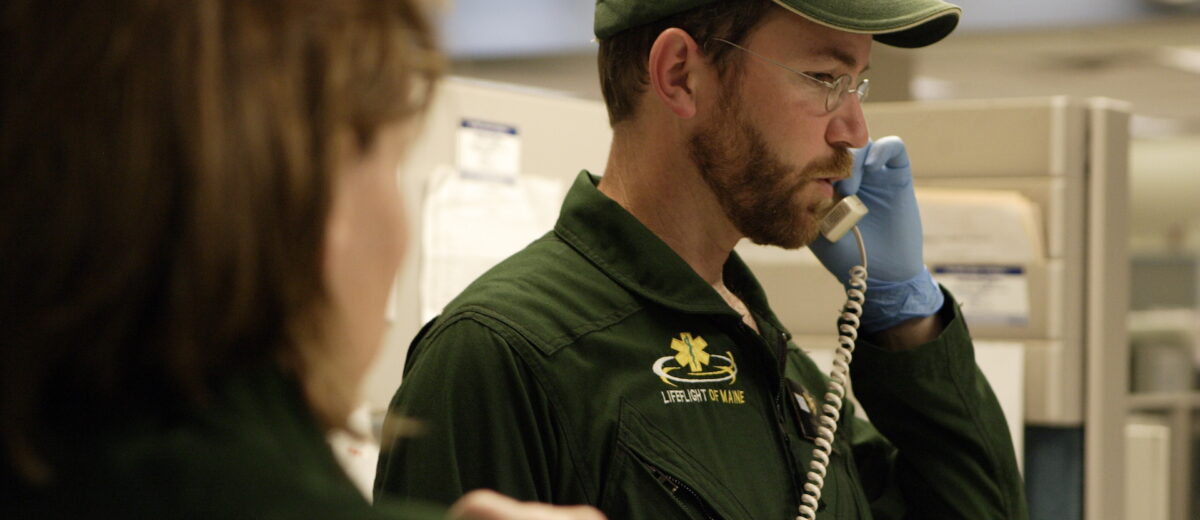Frequently Asked Questions

LifeFlight is a private nonprofit organization with a public mission serving all of Maine. We care for all patients regardless of insurance status or ability to pay for care 24/7/365 with helicopters based in Bangor, Lewiston, and Sanford; a fixed-wing airplane based in Bangor; and rapid response vehicles and specialized ground ambulances.
In FY2021 LifeFlight provided $2.23 million of care to patients without insurance or means to cover the cost of care as well as significant discounts for Medicare and MaineCare patients.
In 2021, 2,303 patients were LifeFlighted from 136 communities, islands, and unorganized townships—about one patient every four hours.
LifeFlight has cared for more than 37,000 patients since September 1998.
LifeFlight of Maine is a statewide organization and operates three bases in Bangor, Lewiston, and Sanford. Our aircraft and ground vehicles at each of these bases allow us to care for patients across the entire state of Maine and beyond.
As LifeFlight cares for the most critically ill patients in Maine, we have been caring for COVID patients since March 17, 2020. Across the last months over 59% of LifeFlight’s patients were known positive or being tested for COVID symptoms requiring every patient to be treated as if they are COVID positive. Managing highly infectious disease patients is a huge challenge requiring new ventilators, oxygen delivery systems, equipment, supplies, and biocontainment systems.
The financial impact on LifeFlight has been extreme and is estimated at $4.2 million in new costs and lost budgeted revenue between March 2020 and September 2021. The overall estimated from the pandemic will exceed $5 million, with $2+M losses in excess of all available federal relief.
LifeFlight operates much like a hospital emergency department, taking care of all patients and billing insurance companies. We contract with all major payers including Medicare, MaineCare, and commercial insurers. Our operational expenses are covered by patient fees, but we rely on the LifeFlight Foundation to support purchasing aircraft, medical equipment, and providing clinical education.
LifeFlight is lean. We are among the most efficient providers in the world, we pay attention to costs, maintain a very small administrative team, and have some of the lowest costs and charges in New England and the country.
LifeFlight’s costs and charges are among the lowest in the country.
The average charge for a LifeFlight transport is around $19,500. Other provider charges across New England and the Northeast range from around $27,000 for nonprofits to $60,000-$80,000 the for-profit air medical companies. LifeFlight participates with all major insurers, Medicare, and MaineCare, so there is no “surprise bill” for patients.
We depend on support from a wide range of partners to make sure we are able to answer the call for help every day and night. Support comes in the form of monetary donations, but equally as important are in-kind donations, partnerships, events, and help to share our story and spread awareness about the critical role that LifeFlight plays in the chain of survival.
Click here to learn more about what you can do to support LifeFlight.
LifeFlight helicopters, airplane, and specialty ground ambulances are equipped as fully functioning mobile intensive care units. LifeFlight’s critical care teams bring the trauma center intensive care unit—skills, medical technology, pharmacy, blood, and more—directly to a patient’s side.
Critically ill or injured patients of all ages needing specialized care beyond what can be provided by local hospitals—including premature infants, cardiac and stroke patients, complex traumatic injury, organ transplants, sepsis, burns, and serious obstetric complications. We use the strictest medical utilization criteria in the country to make sure all flights are medically necessary. Emergency medical providers are guided by state-mandated protocols based on the latest research and best practice.
About 87% of patients are transported from community hospitals to major specialty centers, and 13% are transported directly from the scene of an emergency – roadsides, woods, mountains, and islands. While most patients are transported to EMMC, MMC and CMMC, about 12% of patients are transported to Boston and beyond for specialized care not available in Maine.
We provide local critical care training to medical providers in specialized areas such as traumatic brain injury and pediatric trauma and critical medical diagnosis and treatment. We also support weather systems, hospital helipads, and advanced aviation navigation systems across the state.
Our goal is to provide safe, high-quality, appropriate, and effective transport to the critically ill and injured. Feedback from our partners and people we serve is important to us and is used to direct our continued efforts toward meeting the highest expectations of those we serve. Providers, EMS, and patient can access it by visiting the survey page.
Do you have a question that isn’t answered above? Please email us at info@lifeflightmaine.org and we’ll do our best to get you an answer!
Click here to see a list of LifeFlight of Maine and LifeFlight Foundation contacts.

